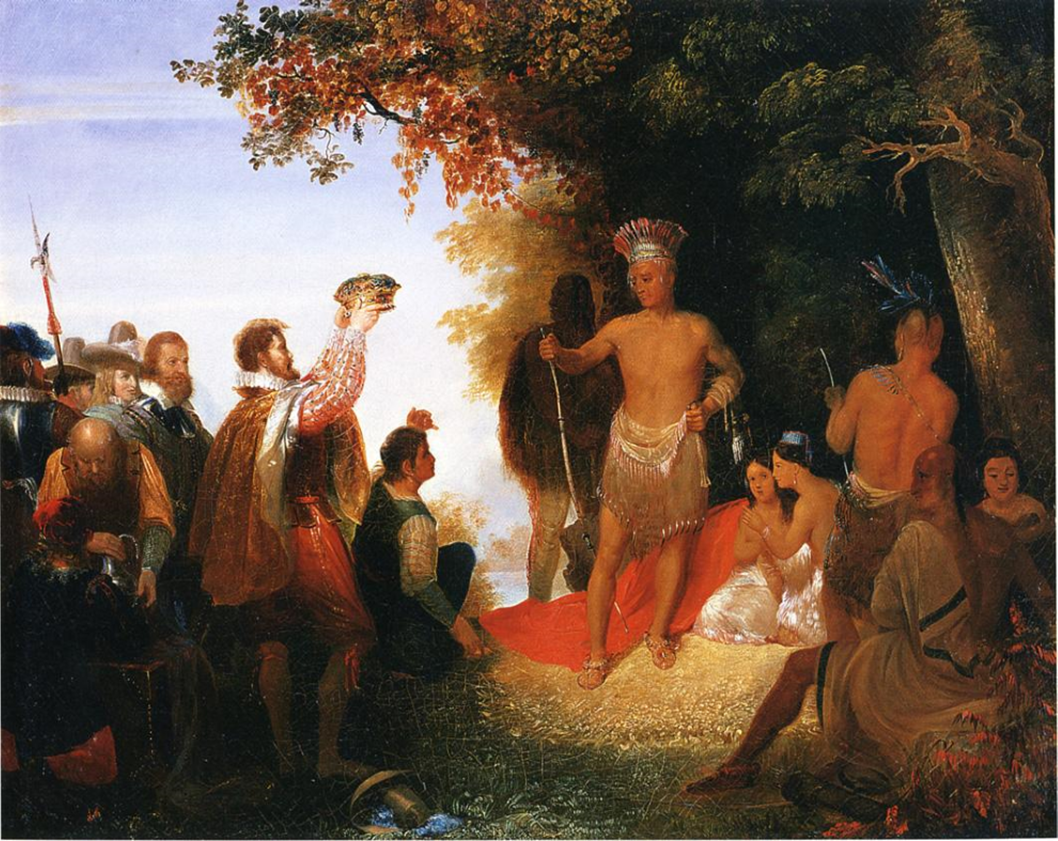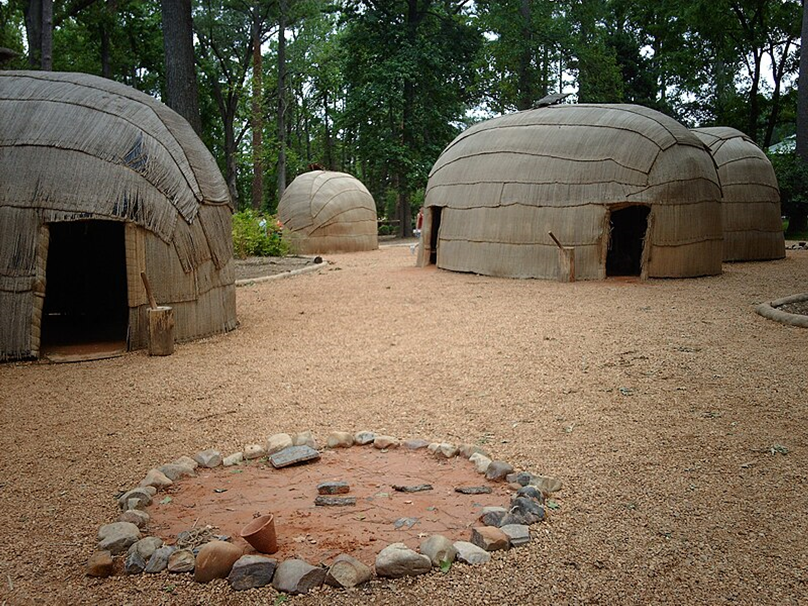
VIEW ON NATURE
One with Nature
By: Stephen L. Wendt
"The Coronation of Powhatan," by the American artist John Cadsby Chapman, oil on canvas. Courtesy of the Greenville Museum of Art, Greenville, South Carolina. (1)
They thrived here for at least 12,000 years. Their lifestyle centered around Nature – planting, fishing, hunting, gathering -- in recurrent seasonal rhythm.
They flourished in a land of plenty between the coastal James and Potomac Rivers. Maize (corn) introduced ~200 AD comprised 50% of their diet by 1100 AD. Beans and squash were staples by the 14th century. Their ingenious symbiotic planting of corn, beans and squash created a bountiful Garden of Eden -- the beans grew up the cornstalks for sunlight while fertilizing the soil with nitrogen, and the fast-growing squash out competed all weeds.
Life was very good for the indigenous Algonquin-speaking people with their close relationships with Nature. Their corn-centric diet was supplemented with seasonal fishing and hunting. Oysters grew to one foot diameter, clams and mussels were aplenty, and fish were easily trapped, speared, and even lassoed (giant sturgeons up to 800 pounds!).
Fresh meat, primarily from deer, turkey, bear and rabbit, boosted with raccoon, opossum, squirrel and waterfowl, supplemented their protein intake. Deer also provided the all-important tanned hides, with every tribal member owning a winter deerskin robe and leggings.
Their exceptional spacious, energy efficient lodgings known as yehakins were made of flexible saplings lashed together into tall arches covered with bark or woven marsh reeds. The replica in Jamestown is 40 by 20 by 15 feet high with one entry / exit and two campfire ceiling vents. The inhabitants slept, cooked and stored their foods and belongings on triple bunk beds. Even in freezing weather, they comfortably went shirtless.
In 1607, Wahunsunacock, or more popularly Chief Powhatan, was the paramount chief of the over 30 tribes comprising the master Powhatan tribe of ~20,000 members. One of his many daughters was the acclaimed Pocahontas.
Appearance-wise, Capt. John Smith wrote they were “…tall and straight” which jibes with archeological analyses showing the six-foot tall Natives towered over the 5-foot 5-inch Englishmen. Powhatan Indians had light complexions and decorated their bodies with paints rendered from oils, charcoal, roots, barks, flowers, and berries. Body paint was power – psychological and spiritual– a prayer to Nature, the creator, or others re: color-specific strengths, hopes, visions, milestones, and messages. Crushed “fool’s gold” was added to some paints as glitter.
Native men shaved one side of their head corresponding to which hand they drew their bowstring. Women wore their hair both long or short, loose, or braided, and commonly sported decorative animal and floral tattoos.
The people wore minimal garments. In warmer months, men wore belted deerskin breechcloths and women waist-down woven grass garments. Observers were amazed at the men’s ability to go shirtless in cool months. In winter, the garments of choice were soft, tailored, pliable fur-lined buckskin robes, leggings, and moccasins. Women donned knee-length, fitted deerskin tunics strapped at the shoulder. Depending on the occasion, members dressed up with jewelry, pearl necklaces, and unique looks such as live green snakes tethered in their hair, trophy bear heads, swan wings, animal pelts, and elaborate turkey feather cloaks.
The Powhatans were one with Nature for 120 centuries… until 144 invasive humans from England affected their life forever! The invaders’ inability to feed themselves, unwillingness to understand indigenous cultural practices, and diseases they brought led to violent conflicts ending in 1646 with the Powhatan Indians largely subject to English rule within 39 short destructive years!
(1) This is a faithful photographic reproduction of a two-dimensional, public domain work of art. The work of art itself is in the public domain for the following reason: This work is in the public domain in its country of origin and other countries and areas where the copyright term is the author's life plus
Reproduction of any article or photograph requires the written permission of the
The ENDEAVOR News Magazine. Unless otherwise noted, photographs are courtesy of the Annandale Chamber of Commerce photographic archive, Wikipedia, and private collections with all rights reserved.
(Copyright © 2012 Annandale Chamber of Commerce. All rights reserved. (Photographs & images, on this page, and on this website, are not available for use by other publications, blogs, individuals, websites, or social media sites.)

Replica of Jamestown Settlement, Powhatan Village

Engraving by William Hole
"Powhatan held this state & fashion when Capt. Smith was delivered to him prisoner 1607." Cropped part of John Smith's Map of Virginia used in various publications, first in 1612.
Virtual Jamestown - http://www.virtualjamestown.org/jsmap_large.html, Public Domain, https://commons.wikimedia.org/w/index.php?curid=388554
(Copyright © 2012 Annandale Chamber of Commerce. All rights reserved. (Photographs & images, on this page, and on this website, are not available for use by other publications, blogs, individuals, websites, or social media sites.)
Copyright 2012 Annandale Chamber of Commerce. All rights reserved. Privacy Policy

